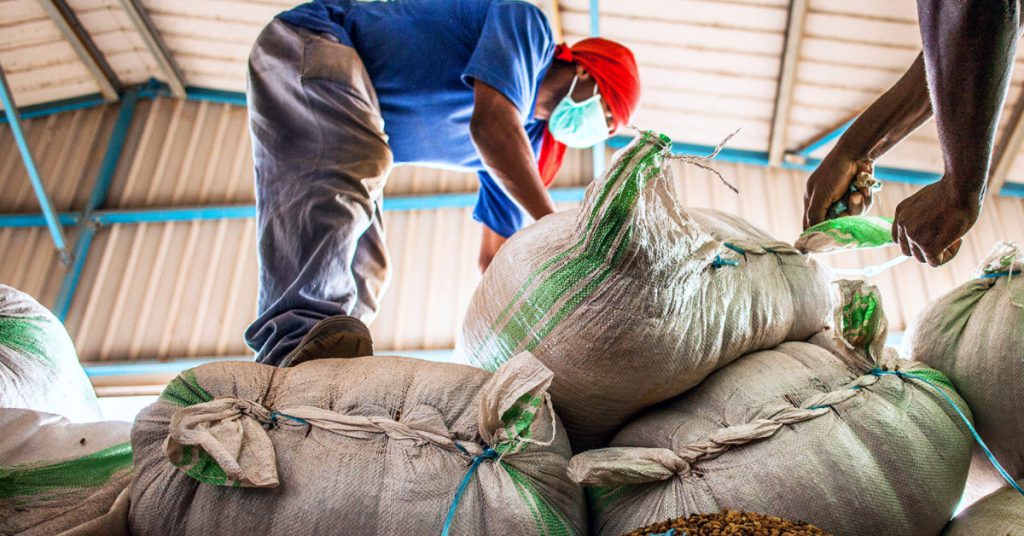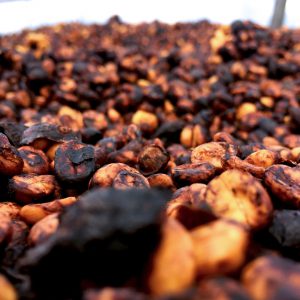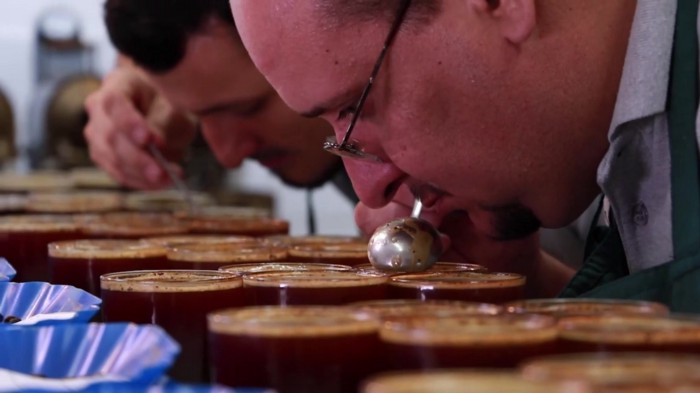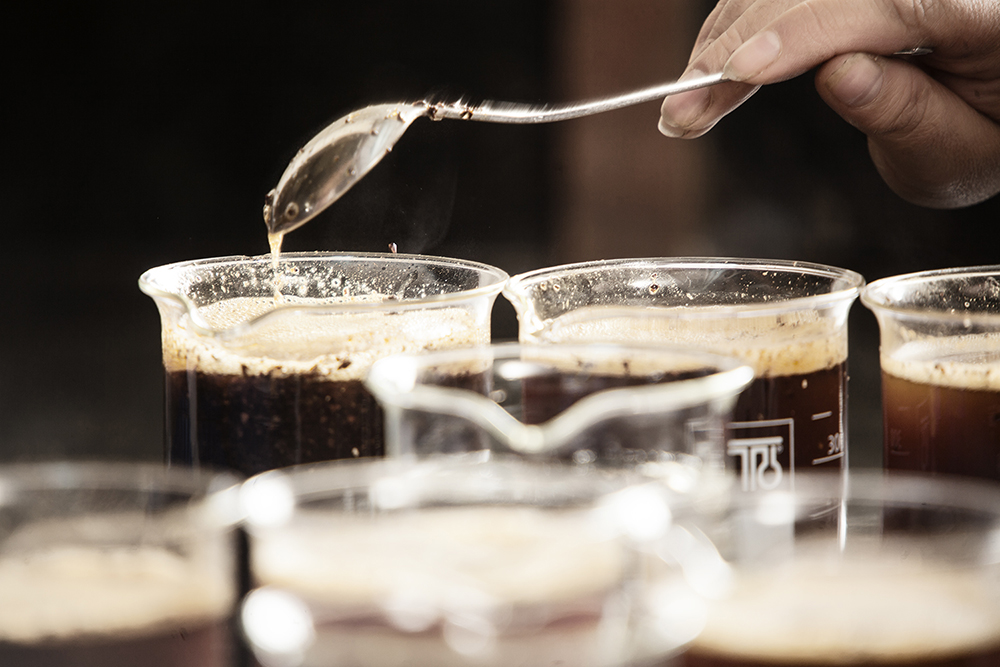Demystifying Green Coffee Sourcing from Origin to Roastery
As a two hundred year old, traditional supply chain company, Volcafe had no public face. However, its business was based on hundreds of thousands of face-to-face relationships. At origins around the world, Volcafe field teams worked with vast networks of farmers, in order to source coffee and make coffee farming sustainable.
With its deep roots at origins across the globe Volcafe realized it was in a unique position to close the loop and deliver sustainable, traceable coffees to roasters. More so than importers without origin networks, it was in a position to finally, truly change the status quo of sustainable coffee sourcing. Enter Genuine Origin.
Genuine Origin was launched by Volcafe in 2016 as an Ecommerce business solution for independent roasters in the U.S. By design Genuine Origin leveraged its producer relationships, support and training for farmer innovation, and a firm belief in traceability to source the highest quality coffees from across 20 origins.
“We wanted to build a channel to sell those really nice coffees, those better qualities, to convey the message that we were doing all this work with the producers,” says Genuine Origin’s General Manager Mauricio Jimenez.
With 99% of Genuine Origin’s team at origins around the globe, it’s easy to conceive how their boots- on-the-ground operations translate into providing independent North American roasters with the best green coffee each country has to offer.
But how, exactly, does the green coffee get from farm to cup? What happens between harvest and 65lb boxes of green coffee showing up at your roastery? Here, we dive into Genuine Origin’s process of sourcing green coffee.

Uganda coffee warehouse and dry mill
It All Starts at Origin
Genuine Origin imports the vast majority of its coffee from its sister companies at origin. This unique vertical integration allows Genuine Origin to be at the root of the coffee. “Coffee is at its best when it is picked,” says Ricardo Gonzalez Dent, Sustainability Manager and Trader with Volcafe Costa Rica, Genuine Origin’s sister company. “Once we pick the coffee…we [can process it] to get at the intrinsic quality of the coffee.”
Costa Rica is just one of the origins in the Volcafe network, but it is well known for its variety of high-quality coffees, each featuring distinct characteristics and flavors, from bright acidity to fruity and chocolatey notes. In recent years, the country’s producers have perfected traditional processing methods and have been at the forefront of innovation in processing:

Black honey process green coffee
- Washed — in this process coffee is run through a depulper and the remaining fruit is removed in tanks before it is left to dry. The process is water-intensive and it can be expensive
- Natural, aka the dry process is the oldest coffee process. Cherries are left to dry in the sun — sometimes on cement patios, sometimes on raised beds — and turned frequently. When fully dried, the dried outer skin and fruit is removed.
- Honey. In this process, which originated in Costa Rica, some or all of the mucilage of the coffee cherry (or coffee “honey”) that coats the parchment is left on during the drying stage, giving the coffee a sweetness that resembles a natural.
- Natural anaerobic. This coffee utilizes both natural processing — with the cherry and mucilage left on the bean — and anaerobic fermentation — the beans are placed in airtight tanks and deprived of oxygen, which develops a mix of lactic and malic acid — before being fully sun dried, resulting in super punchy flavors.
- Termico (thermal). A process created by don Luis Campos of Costa Rica’s Cordillera de Fuego in which ripe cherries are semi-washed, then heated with some of the mucilage left on the bean, leading to the natural sugars breaking down and partially caramelizing to create an exceptionally sweet, fruity, and balanced cup.
Every one of Genuine Origin’s sister companies has its own lab and Q graders to develop and evaluate samples before sending them on to GO’s North American headquarters for quality assessment. At the Costa Rican operations, each coffee begins the same way: with harvesting and cleaning the coffee, before being fermented, if necessary, and dried, either by sun or mechanically.
Quality Control & Contracting

Cupping lab at Molinos de Honduras
With every crop, a sample of the coffee in its parchment is milled for the pre-shipment sample to GO’s quality control team, Jimenez and quality control manager Siobhan Gottlieb. As they receive type samples for evaluation, Gottlieb, who is also a Q grader, roasts all coffees to Specialty Coffee Association specifications. The team then prepares 10 cups for the cupping — rather than the standard 5 cups per sample — takes notes, and provides feedback to origin, where they’re then directed to begin milling the entire lot once ready, before being packed and shipped to the U.S. Meanwhile, the GO team draws up a contract outlining quantity, quality, price, and delivery location.
In order to determine how much coffee to contract, GO combines information from several sources to begin building a portfolio. That means “data from past purchases, feedback from our sales team, feedback directly received from customers, and input from our sister companies,” says Jimenez. GO’s sales managers, in particular, closely communicate with customers to understand a coffee’s marketability as well as its forward buying/pre-sale capabilities. “With all this information we try to forecast how much coffee we need per origin, and then we start working on an individual plan for each origin.”
Once the contract is executed, origin ship GO’s quality control pre-shipment samples, the cupping notes from which will be are used to build the coffee’s online profile — crucial for customers making buying decisions. After the pre-shipment sample is approved, GO can start pre-selling the coffee to roasters, while the team at origin performs further quality assessment before packing and sealing the green in moisture-proof bags to ship to GO’s two U.S. warehouses (located in Pennsylvania and Washington).
Arrival in the U.S.

Cupping coffee
When the coffee arrives, Gottlieb’s lab measures moisture, looks for defects, and analyzes color, size, and consistency, before roasting and cupping samples again to ensure the quality and accuracy of what is being communicated to customers. Then, they’ll update any profile notes, and send the origin team an official approval of delivery.
“Coffee is a living product which evolves, matures, and ages over time,” says Jimenez. “Our customers need to be able to shop with confidence. We want our descriptions to be accurate, so cup a coffee as many times as possible in order to make sure each coffee is consistent.”
Genuine Origin has built a well-diversified menu to satisfy the needs its diverse customer base. This involves offering consistently, crowd-pleasing coffees every year from community lots (think: signature blends from Kenya, juicy naturals from Ethiopia), while also seeking out new, innovative micro-lot coffees, like the natural anaerobic and termico process coffees from Costa Rica. However, Jimenez shares that not every high-quality coffee makes the cut; sometimes, due to roaster preferences, price and projected low profit margins, he has to reject a coffee even when it cups well.
“There is a reputation that is associated with coffees from certain origins, and people just look for those coffees all the time,” he says. “We need to give people coffees they can use for their blends, coffees when they want to start developing their wholesale program, and coffees when they need to hit a certain price point.”
On the other hand, sometimes a contracted coffee arrives that doesn’t meet the standards of the pre-shipment samples, perhaps due to a problem that arises during production or while shipping. “Coffees can spend anywhere from 60 to 75 days in a vessel,” says Jimenez. “They’re beautiful when we cup them, but sometimes, by the time they land, they change.” In those cases, GO updates its notes and changes the pricing to reflect the new quality.
“In the last year and a half, we haven’t had a lot of cases of coffees not fully achieving the initial expectations,” adds Jimenez. “But it happens every single year — if it didn’t, it wouldn’t be coffee.”
Beyond the Bean

Cupping coffee at Genuine Origin
As Genuine Origin continues to grow and serve its customers, the team strives for not only innovation and quality, but to make an impact with their coffees. For instance, every sale of the San Diego Tarrazu Honey and Jaguar Mountain coffee gives back to Fundación Pro Zoológicos and their efforts to preserve endangered jaguars in Costa Rica; to date, the initiative has raised more than $40,000 USD.
“We are always finding ways to partner with locals NGOs, cooperatives, single producers,” says Jimenez. “It takes time to build a relationship. That’s why we have people on the ground and why Volcafe as a company decided many years ago to invest in all these origins.”
Genuine Origin has recently added the origins of Mexico, El Salvador, and Nicaragua to its roster, and continues to develop partnerships across the globe. “At the end of the day, the objective is being able to sell these coffees at a better price and being able to represent the producers to the best of our ability,” says Jimenez. “With our origin operations, we try to strike a balance between consistency and bringing in new and exciting coffees.”
Sourcing coffee at Genuine Origin starts at the farm. It’s about picking the cherry when it is at its best, sorting with care, patiently processing to bring out the best in the coffee and working together to bring Genuine Origin’s customers the coffees they need. Getting a coffee from the farm to the Genuine Origin website takes a lot of effort and coordination, but once it is online, green coffee buying is effortless. Roasters can find reliable cupping notes, scores and information on every coffee that arrives on www.GenuineOrigin.com. All of the work spent getting the coffee online is done so that roasters can focus on their passion: coffee roasting.






